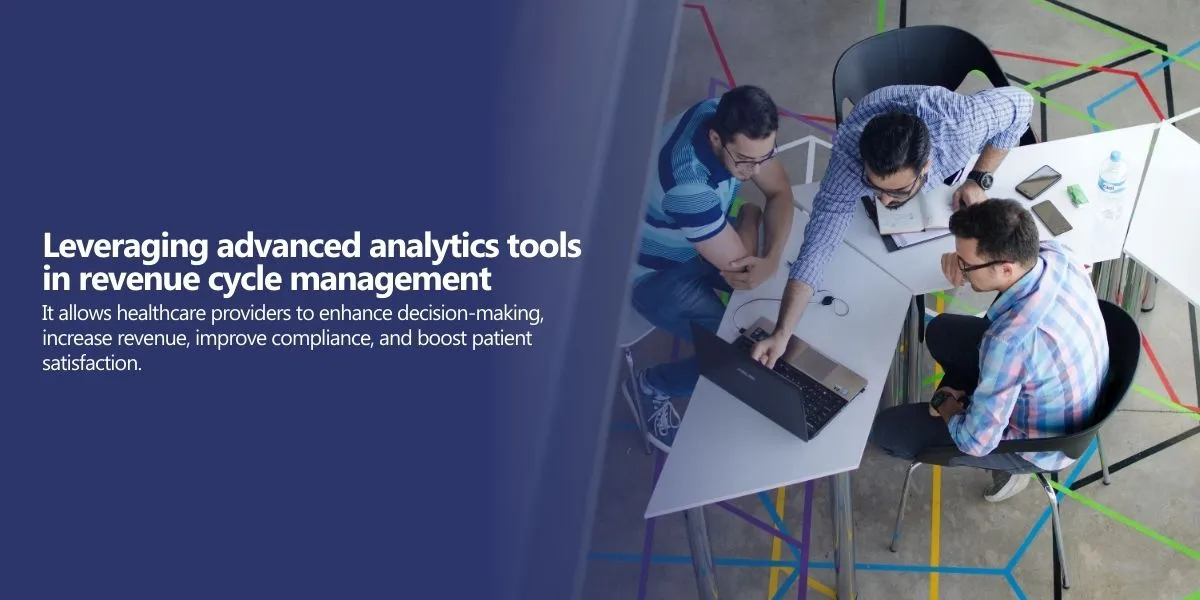Exploring Analytics Tools to Enhance Revenue Cycle Performance
In the complex landscape of healthcare revenue cycle management (RCM), analytics tools play a crucial role in driving efficiency and financial health. These tools provide deep insights into every aspect of the revenue cycle, enabling healthcare providers to make data-driven decisions that enhance performance and profitability. This article delves into the various types of analytics tools available, their benefits, and how they can be used to optimize RCM processes.
The Role of Analytics in RCM
Analytics tools in RCM convert vast amounts of data into actionable insights, allowing healthcare organizations to identify patterns, predict trends, and pinpoint areas needing improvement. By integrating analytics into RCM, providers can achieve a comprehensive understanding of their financial operations, leading to optimized billing processes, reduced denials, and improved patient satisfaction.
Types of Analytics Tools Used in RCM
Descriptive Analytics
Descriptive analytics tools help visualize and understand historical data, providing insights into what has happened over a specific period. These tools can track key performance indicators (KPIs) such as claim denial rates, reimbursement levels, and patient payment behaviors.
Predictive Analytics
Predictive analytics uses historical data to forecast future outcomes. In RCM, these tools can predict which claims are likely to be denied or which patients might delay payments. This foresight allows providers to proactively address issues before they impact the revenue cycle.
Prescriptive Analytics
Prescriptive analytics goes a step further by not only predicting outcomes but also suggesting actions to achieve desired results. For example, it can recommend the best methods for collecting patient dues or adjusting billing practices to reduce denials.
Benefits of Implementing Analytics Tools in RCM
Enhanced Decision Making
Analytics provides a solid basis for decision-making by offering quantifiable metrics on financial performance. Healthcare providers can use these insights to make informed decisions about process improvements, resource allocation, and policy adjustments.
Increased Revenue and Reduced Costs
By identifying inefficiencies and pinpointing errors in the billing process, analytics tools can help minimize costly mistakes and streamline operations. This leads to faster claim processing, reduced denial rates, and ultimately, increased revenue.
Improved Compliance
Analytics tools can help ensure compliance with changing regulations by monitoring adherence and flagging potential violations. This proactive approach helps avoid penalties and ensures that billing practices meet all regulatory requirements.
Better Patient Satisfaction
Analytics can also enhance patient satisfaction by providing insights into patient interactions and feedback. This data can help improve communication strategies, billing transparency, and overall patient engagement.
Challenges and Considerations
While the benefits are significant, implementing analytics in RCM also comes with challenges. Integrating complex analytics tools requires substantial investment in technology and training. Additionally, data security is a paramount concern, as these tools handle sensitive patient information.
Analytics tools are transforming revenue cycle management by providing critical insights that enhance operational efficiency and financial performance. As the healthcare industry continues to evolve, the strategic implementation of these tools will be crucial for healthcare providers looking to optimize their revenue cycles and improve overall service delivery.
